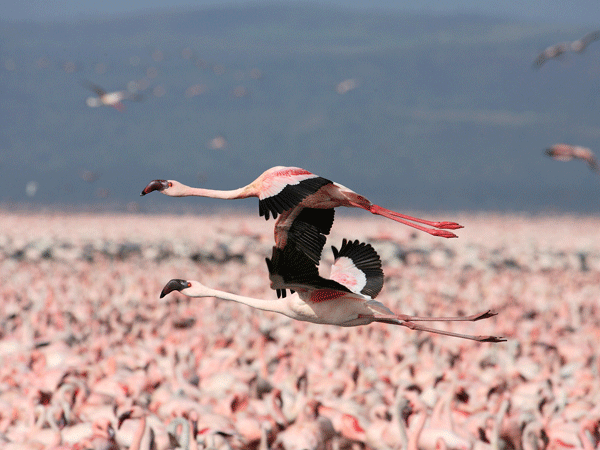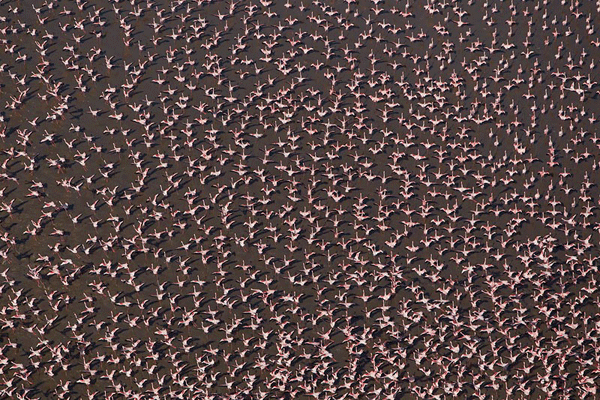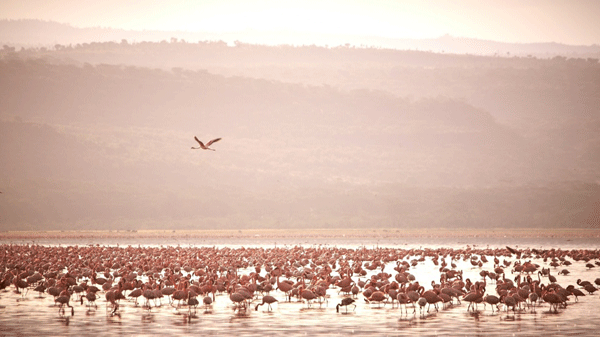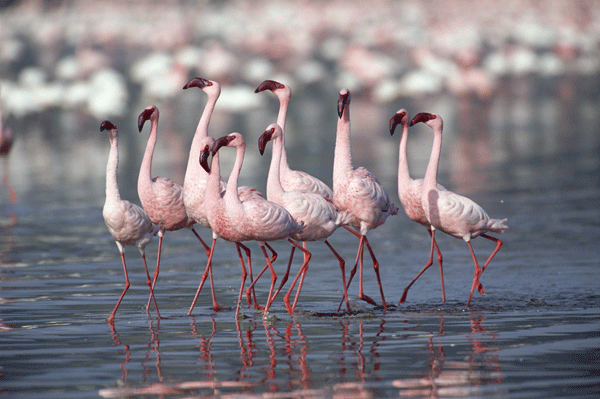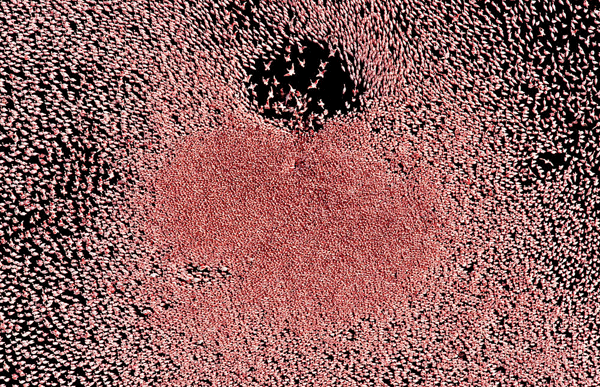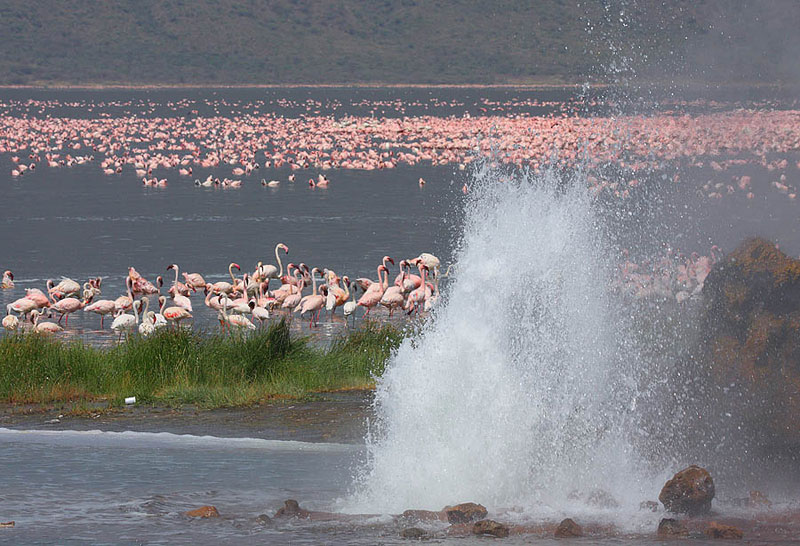
Flamingos in Kenya
Spectacularly pink in colour and oddly shaped atop tall, bald, stilted legs with knees that bend backwards with every step taken; flamingos are amongst the most iconic birds on the planet. Lesser flamingos are differentiated from their greater relatives by a rosier feather, darker beak and crimson leg, while their slightly smaller size can only really be identified when the two sub species are seen alongside one another. Two thirds of the entire population of these marvellous water birds occur in southern and east Africa and require a highly specialised habitat, which endangers their population, as their specific diet and territory risks being threatened by pollution.
All the flamingos in east Africa flock through the air in massive V formations, headed for their preferred breeding area, Lake Natron in Tanzania. An exceptional sight to behold – 2.5 million long-legged, pink-feathered birds taking off in an almighty surge from the surface of the lake, revealing the blue water beneath their crowded wings. These birds migrate in unison, between the alkaline lakes in the East African Rift Valley, as food sources deplete and the season to breed arrives. Flamingos rely on very unique environments in which to breed, and have never bred in captivity, meaning that a positive change in their “near threatened” status is dependent entirely on nature. Lake Natron was, for decades, the chosen nesting spot for all of east Africa’s flamingos, who lay just one chalky capsule at a time; however, industrial development has polluted the water source, making one of only three breeding sites in southern and east Africa, unsuitable.
More recently, the astonishing masses of flamingos cover the shallow surface of Lake Nakuru and Lake Bogoria in Kenya. Having crossed the border from Tanzania, the flocks migrate to the next alkaline lake, dipping the upside of their large, curved beaks into the water and pumping nutrients through their nasal filters, retaining the algae, Spirulina, which they feed off. This algae dyes these Rift Valley lakes a beautiful blue-green colour, while the pigment in Spirulina is what gives these birds their characteristic pink hue.
Flowing freshwater streams surround Lake Bogoria, trickling through moss-covered rocks and nourishing the long grasses and green leaves sweeping low to the ground, creating a dense woodland milieu. These enchanting streams become populated by flamingos as they gracefully bathe in the clean mountain water, rinsing off the salty minerals that would otherwise harden their feathers and render them unable to fly. Once Lake Bogoria has offered its algae to its dutiful feeders, and after the flamingos have frolicked in the vibrant brooks, the birds depart for Lake Nakuru, which awaits with a bountiful offering of the blue-green sustenance sought after by the lesser flamingo.
So astounding is the number of flamingos that populate Lake Nakuru and Lake Bogoria that people touring this semi-arid region of Kenya can’t resist a visit. This is not a scene replicated anywhere else in the world, due to the very specific environment these creatures are adapted to, making a trip through Lake Nakuru National Park a necessity. A sanctuary for the critically endangered rhino; this national park borders the pink-tinged lake and houses within its borders, a population of protected Rothschild giraffes, two varieties of waterbuck unique to Kenya, as well as the big cat varieties of lion, cheetah and, increasingly, leopard. Lake Nakuru National Park has grown in size and significance, and offers its visitors a rare vision of the millions of lofty birds dipping their agile necks in search of their microscopic morsels.
A photographer’s dream – the lesser flamingos of the East Rift Valley settle alternately in the lakes of south-west Kenya displaying a sight so wondrous that it simply must be seen. A tailor-made safari circuit takes travellers through the predator pride land of the Masai Mara, where the wildebeest migration presents a hooved spectacle rivalled nowhere else in nature; to Lake Nakuru, where the safari focuses on bird-watching of a very colourful kind. Completing the trio of destinations is Lake Bogoria, where the steaming spouts of hot water shoot out of the ground from spectacular hot-springs and the migrating flamingos rinse their crystallised feathers in freshwater creeks before taking to the sky and painting it pink.
Chloe Cooper
